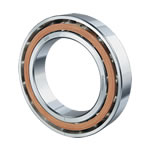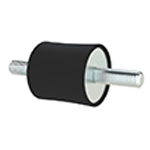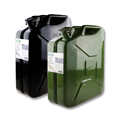Categories
Modern Warehouse
American Standard ANSI
Please wait while we load your selection
American Standard ANSI Links
The American National Standards Institute (ANSI) was founded in 1918 and represents the US in the International Organization for Standardization (ISO). American Standard ANSI is widely used around the world. Our BS standard components are listed elsewhere.
Construction
Link chains consist of side plate sections held together by cross pins. They are constructed either of flat plates assembled alternately overlapping or underlapping, or of angled (cranked) plates that overlap at one end and underlap at the other.
Chains with two runs of plates are called "simplex. Chains that have one, two or more additional runs of plates secured on the same cross pins are called "duplex, "triplex and so on.
Links also vary in the strength of their construction material and anti-corrosion finishes. Protective finishes are recommended in often wet environments like agriculture and abattoirs or for exposure to saltwater or chemicals. Choose high-durability chains like stainless steel in locations where lubrication is impractical or forbidden (for example, food manufacturing). Connectors should match your existing chain.
Our subcategories are organised by the method of fitment (clips, rivets, cotters and so on). If in doubt about the link you require, our personnel are just a call away.
Subcategories
Connecting links with flat side plates secured with horseshoe clips are used in short pitched chains. Clips should be fitted with the closed edges facing the direction of travel.
Single cranked cottered links comprise cranked plates fused to a bush and roller at the narrow end and secured with cotters at the wide end.
Double cranked links comprise a cranked link together with an inner link and are used to extend chains with odd numbers of pitches.
Inner links consist of two flat inner plates ready pressed on to bushes and rollers.
Cottered connecting links are flat-sided inner links secured with split pins.
Outer links have two pins riveted on one plate and the opposing one secured by press riveting after assembly.
Dimensions
Three measurements define chain links: pitch is the distance between pins; inside width is the distance between inner side plates; and there is also the roller diameter.
American standard ANSI chains and sprockets are designated by numeric codes, like 40, 61, 85 or 160. The final digit denotes the type of chain: a zero meaning "standard, 1 meaning lightweight, a 5 a rollerless bush chain and so on. The preceding digit(s) indicate the size in eighths of an inch, so a 4 denotes ? pitch and 16 indicates 2. Common ANSI sizes are 40, 50, 60, and 80.
Lubrication
If your application cannot be lubricated because of restricted access or proximity to foodstuffs, choose a hardwearing low-maintenance material like stainless steel. Lack of lubrication increases the rate at which chains "stretch due to wear, causing a mismatch with the sprocket and eventually eroding its teeth, so in all other cases chains should be regularly lubricated with light mineral oil. Avoid grease, mixing different oils, and spray lubricants with additives that encourage abrasive dirt to adhere.












